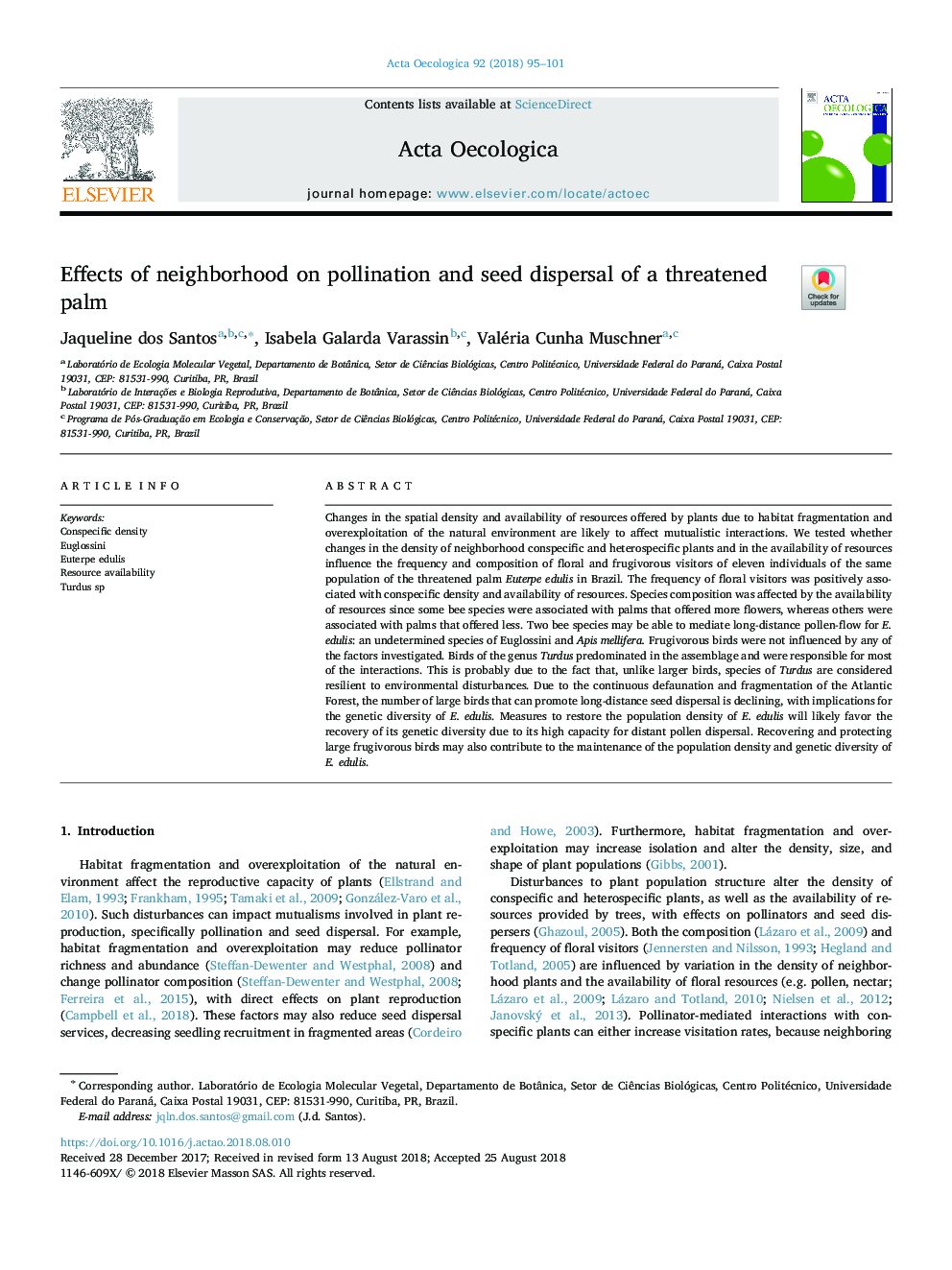| Article ID | Journal | Published Year | Pages | File Type |
|---|---|---|---|---|
| 10110107 | Acta Oecologica | 2018 | 7 Pages |
Abstract
Changes in the spatial density and availability of resources offered by plants due to habitat fragmentation and overexploitation of the natural environment are likely to affect mutualistic interactions. We tested whether changes in the density of neighborhood conspecific and heterospecific plants and in the availability of resources influence the frequency and composition of floral and frugivorous visitors of eleven individuals of the same population of the threatened palm Euterpe edulis in Brazil. The frequency of floral visitors was positively associated with conspecific density and availability of resources. Species composition was affected by the availability of resources since some bee species were associated with palms that offered more flowers, whereas others were associated with palms that offered less. Two bee species may be able to mediate long-distance pollen-flow for E. edulis: an undetermined species of Euglossini and Apis mellifera. Frugivorous birds were not influenced by any of the factors investigated. Birds of the genus Turdus predominated in the assemblage and were responsible for most of the interactions. This is probably due to the fact that, unlike larger birds, species of Turdus are considered resilient to environmental disturbances. Due to the continuous defaunation and fragmentation of the Atlantic Forest, the number of large birds that can promote long-distance seed dispersal is declining, with implications for the genetic diversity of E. edulis. Measures to restore the population density of E. edulis will likely favor the recovery of its genetic diversity due to its high capacity for distant pollen dispersal. Recovering and protecting large frugivorous birds may also contribute to the maintenance of the population density and genetic diversity of E. edulis.
Related Topics
Life Sciences
Agricultural and Biological Sciences
Ecology, Evolution, Behavior and Systematics
Authors
Jaqueline dos Santos, Isabela Galarda Varassin, Valéria Cunha Muschner,
